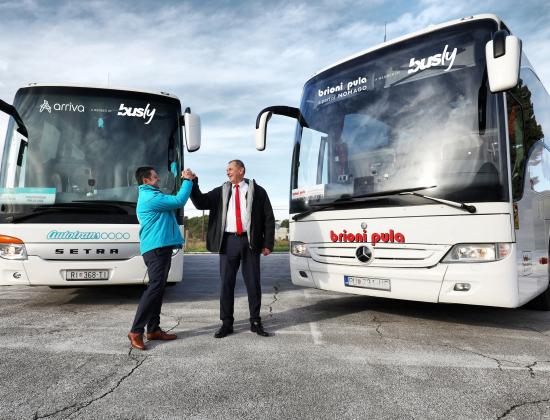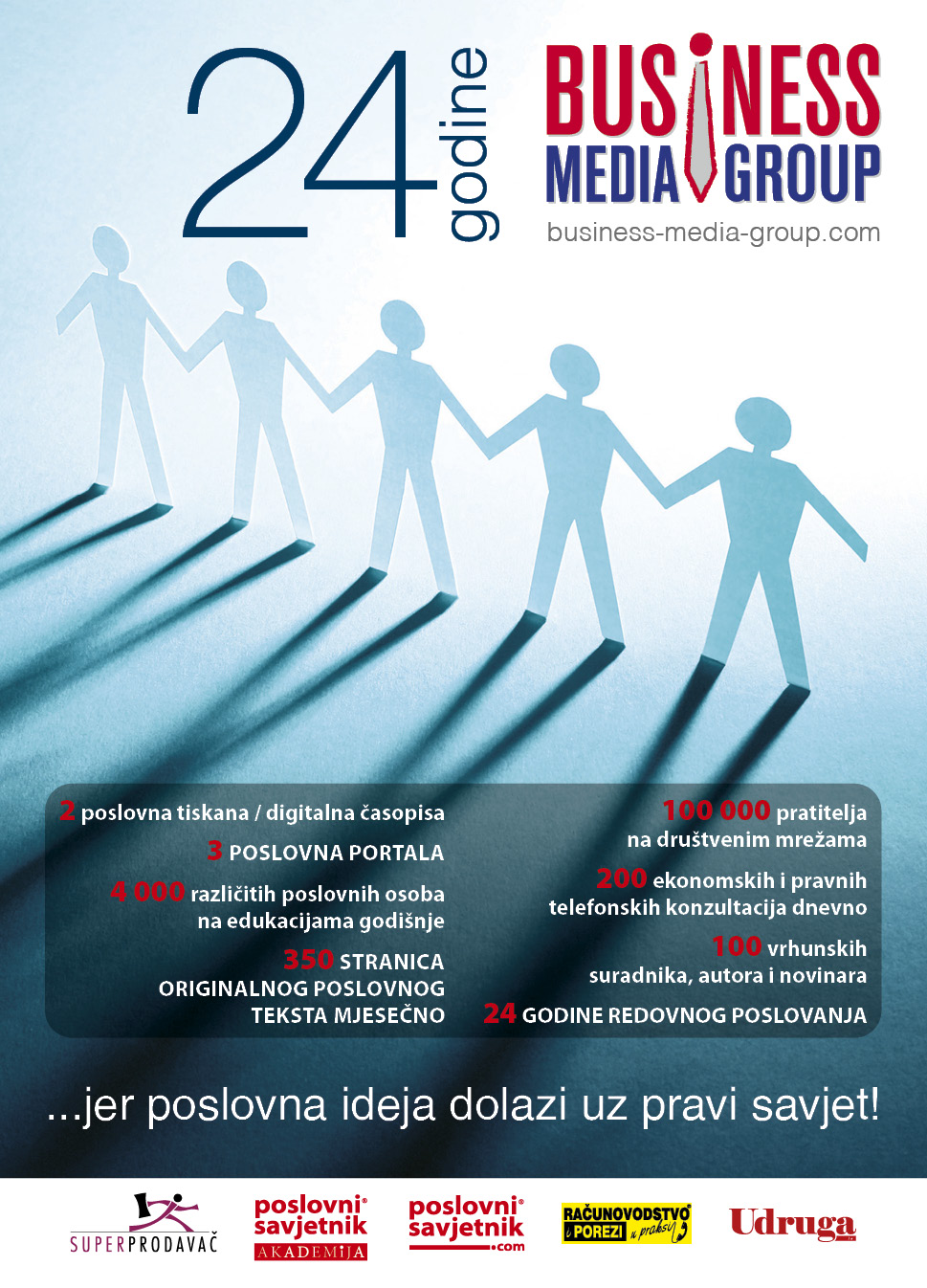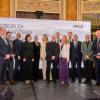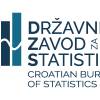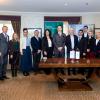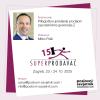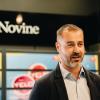John Lodder: Leading AFTER the Pandemic means creating a ‘New-Normal’

2020 was characterized by the COVID-19 pandemic with its impact on our societies, organizations and individuals. Globally we saw a wave of uncertainty, fear and growing worries about the physical and mental health of our people.This uncertainty is still present, a vaccine is coming however, people still need to have new perspectives. 2020 is also the year showing great leaders who managed to keep their people together and focused on the positive as well as leaders who were not able to do that. Excellent leaders must be visible, have a vision and create structure and they are accountable, they take care of their people. 2020 showed that a leadership style based on trust, empathy, openness and equality is crucial to keep an organization healthy and successful.
A pessimist sees a difficulty in every opportunity; an optimist sees the opportunity in every difficulty.” (Winston Churchill)
The magnitude and the duration of a crisis are important determinants of uncertainty. Uncertainty makes us feel uncomfortable and usually it creates a resistance to change. Also, taking actions without having all the answers makes us feel uncomfortable. With this pandemic nobody had all the answers. So leaders had to trust their own common senses, expertise and experience and communicate with their people. On top it was important to value adaptability, flexibility, innovation and imagination that enabled the organization to take new roads into the unknown.
And we saw many great examples of that.
The speed of change is accelerating:
A global survey under 2,000 CEO’s shows that 60% said they need to reinvent their company every 3 years in order to survive. This is a speed we haven’t seen before. (In 2018 the average was 3,5 years)
In this picture you can see the need for reinvention per sector according to their CEO’s.
There is a much greater need for reinvention:
In 2018, despite the reported speed of change, not all industries saw reinvention as a strategic priority (measured on a scale from 0, the lowest need, to 100 representing a very high need).
As a result, many companies got disrupted by start-up newcomers, including the entertainment industry that got shaken up by the likes of Hulu and Amazon Prime, or the retail sector which is going through a fundamental shake-up.
Another example from the pandemic is ‘the digital doctor’.
The $3.6 trillion USA healthcare market is embracing digital. As the pandemic drives doctors and patients to telehealth, companies have stepped up to meet the increasing demand.
Telehealth has many benefits - and some challenges. Vulnerable populations may lack access to technology. But healthcare workers now grapple with video fatigue, longer workdays and erosion of work - life boundaries just like workers in other industries, and increased utilization could increase costs. But the shift to digital healthcare is not unprecedented, and it can be better managed. Lessons learned from the push to adopt electronic health records could help ease the transition
The rapid expansion of digital healthcare means providers see 50 to 175 times more patients via telehealth than they did before the pandemic’s outbreak. Prior to COVID-19, total annual revenues of the US telehealth players were estimated at $3 billion. Now that figure could rise to $250 billion. Organizations will need to adopt new ways of working to capture this opportunity. And they should move quickly.
Conclusion: In 2021 re-invention becomes a strategic issue for most sectors.
The COVID-19 pandemic has challenged organizations to operate in new ways
Throughout the year, we have seen organizations accelerate their digital transformations to support remote working, embrace a renewed sense of purpose and, drive impactful and lasting change.
(In the Netherlands companies invested 10% more in ICT and Telecom equipment in 2020 as in 2019 for remote working, while the overall investments decreased with 5%)
It certainly has not been easy, but this experience provided organizations with a better understanding of what they can accomplish, and how quickly during times of uncertainty and, how flexible and engaged people are, if provided with trust, open involvement and empathy.
According to Gartner, 74% of surveyed CFO’s plan to keep part of their workforce permanently remote after the COVID-19 crisis. Both organizations and employees see opportunities and benefits from remote working including flexibility, saving costs, increased productivity and higher employee and customer satisfaction. Several companies already announced plans to shift to a hybrid or completely remote working model after the pandemic.
From the experiences so far we know there are three important questions managers have to ask and talk about with employees that will support success as companies consider a hybrid path.
1.Ask your employees in an open exchange ‘what does the individual employee need?’
Every employee responds to circumstances differently. Some thrive in an office setting; others are better able to focus in a remote environment. Additionally, employees have likely adjusted to their new ways of working; for example, many have embraced a new-found flexibility in working hours. Consider all employee needs and preferences – existing and new – when revising policies toward remote and onsite work.
Employers should anticipate a further socialization process as employees acclimate to further changes associated with the move to a hybrid model.
Consider new management skills that arise as some employees return onsite while others remain remote. Remote employees may fear disadvantages, such as a lack of visibility for promotions. Leaders will be required to manage remote-first and spend a significant share of time in remote work. It is important to devise solutions that eliminate any potential for exclusion.
2.Ask ‘what activities should be remote?’ rather than ‘what roles?’
Not every job can be equally performed in a remote setting. Remote work may not be sustainable for everyone and, the extent of remoteness will differ by role and team.
To better facilitate remote work, consider disaggregating activities traditionally bundled in a single role.
Account for the necessity and level of human and physical interaction, as well as whether the organization has the proper infrastructure to facilitate remote working.
3.Ask ‘how to enable this?’ not just ‘where people should be?’
In a soon-to-be-published study of 46 Global Capability Centers, the top three reasons attributed to a fall in productivity while working remotely during COVID-19 were related to a lack of operating model support:
- reduced collaboration among team members (34%),
- lack of performance management processes (17%), and
- lack of motivation in employees and teams (17%).
When devising a hybrid work policy, look at the whole picture, including “hidden” opportunities and risks of remote work. Remember that job functions and activities do not operate in silos as they are moved offsite; ensure employees have the right tools and skills for collaborating and the know-how to use them. Also, be sure to account for employees’ home ergonomics, internet bandwidth and private environments.
How Leaders Can Prepare for the Next Phase of the COVID-19 Crisis
Now is a key time for organizations to reflect on learnings and consider the role that remote working should play in their future strategic and operating model.
The pandemic demands that leaders call on skills well beyond the ones they ordinarily need in an already demanding position. As we move to a new stage of the crisis, they will need to be simultaneously strong, resilient, and calming - and inspire those traits in others. As leaders begin to come out of crisis mode and look to the future, you should realize that we are entering a period that presents even more significant leadership challenges.
When you are leading in a crisis, everyone comes together to do what is necessary to drive success. However, now, as more organizations look ahead to reentering a more stable operating environment, they have to confront new realities that will be with us for some time:
- Organizations will be called on to continually pivot in the face of new challenges brought by the global pandemic.
- We will continue to work virtually and we will most likely experience further workplace transformations.
- Employees everywhere have been rethinking what they want from their work, their leaders, and their organizations, which creates opportunities - and risks - for employers to manage.
- Finally, it is clear that succeeding in an upended world will require leadership, and not just any kind of leadership. Organizations will need truly accountable leaders at every level!
Organizations and their leaders must continue to step up in extraordinary ways to help drive strategy execution, inspire employees, and manage uncertainty and ambiguity.
Here are some strategies to consider:
- Revisit leadership expectations.
Organizations must take time to clearly articulate the expectations they have for their leaders. We know that when organizations fail to do this, leaders may become confused and rudderless; two things that will set your organization back as you reenter. Once an organization has made its leadership expectations clear, leaders must take time for some honest reflection and ask themselves: ‘am I all-in and fully committed to be the best leader I can be?’ ‘ Would I need a coach as a sparring partner?’
- Define clear leadership obligations.
Many people are counting on you and your organization: your employees, your customers, your members, other stakeholders and the communities you serve. Think about what they need from you and your organization right now. At a personal level, every leader must also pause and reflect on what they see as the most critical leadership obligation they need to live up to right now.
- Build resilience and resolve.
Being a leader has never been easy. The role demands resilience and resolve, both of which are even more critical in times of adversity. At the same time, leaders need to strengthen these characteristics in the people they lead. Leaders will need to continue to find a way to rise above all the stress and be a calming and reassuring presence for others.
- Foster connection and community.
Organizations need their leaders to work together now more than ever. A crisis like the one we are experiencing can either bring leaders together or tear them apart. Continue to find ways to bring leaders in your organization together - even virtually - to help them build relationships and support each other so they will rally one another and come together despite adversity.
At a personal level, each leader will need to find ways to support their peers and colleagues in the coming months to build a sense of community and a strong leadership culture. As we continue to embrace the unknown in our world, it is clear that leadership accountability will become more critical than ever.
It has become a crucial element for future-proofing organizations in times of drastic change.
- Leaders should serve as role models.
Leaders should build a culture of gratitude and.emphasize the importance of expressing thanks and appreciation at work. Cultivating a culture of gratitude won’t just boost employees’ well-being and performance.
According to research it will also help stop workplace mistreatment.
Healthy relationships
I started this column referring to excellent leaders who managed to keep their people together and focused on the positive during this pandemic.
Do you think that being happy is what most people want to achieve?
Do you know what makes people, in general, your colleagues and employees in particular, happy?
Martin Seligman, the founding father of Positive Psychology, developed the ‘PERMA model of well-being’ with five key pillars of happiness. PERMA includes Positive emotions, Engagement, Relationships, Meaning and Accomplishment.
While each of the pillars is important for a well-balanced life, healthy relationships are the single most important determinant to happiness, according to his research.
As a Leader there are a few simple steps you can take to improve the wellbeing of your colleagues and your employees:
- Spend a few minutes thinking about your relationship and the typical interactions you have with your colleague or employee.
Do you tend to focus on problems in this relationship? Or do you tend to focus on opportunities to connect?
Ask yourself what specific steps you can take to proactively improve your connection.
- Focus on what is going right, rather than wrong in your relationship.
Since good things happen five times more often than bad things on a daily basis, be sure to direct your attention to the positive rather than dwelling on the negative.
- Identify and use your strengths every day and help your colleague and employee to do so as well.
I end this column with some quotes and a beautiful poem for ‘under the Christmas tree’.
I thank you for reading my column(s) and I like to wish you and your family a Merry Christmas and a wonderful, a successful and an inspirational 2021. In general we do not know what the future will bring us or, what we will do to shape our future.
- ˝Being a leader has never been easy. The role demands resilience and resolve, both of which are even more critical in times of adversity.˝ (Vince Molinaro PhD.)
- ˝Education and Training is not something you can finish˝ (Isaac Asimov)
- ˝Positivity presents an opportunity to step up to the next level of existence: to broaden your mind and build your best future.˝ (Prof. Dr. Barbara Fredrickson)
- ˝Whether you look for the negative or you look for the positive…..You will find what you are looking for.˝
(Sheila Burk)
- ‘’Future’’ A poem by Maggie Smith:
Everything that has not happened yet.
The future is tomorrow and next year and when you’re old,
but also in a minute or two, when I’m through answering.
The future is nothing I imagined as a child, no jetpacks,
no conveyor-belt sidewalks, no bell-jarred cities at the bottom of the sea.
The trick of the future is that it’s empty, a cup before you pour the water.
The future is a waiting cup.
And for all it knows, you’ll fill it with milk instead.
You’re thirsty.
Every minute carries you forward, conveys you into a space you fill.
I mean, the future will be full of you.
It’s one step beyond the step you’re taking now,
what you’ll say next, until you say it.
(For this column I was inspired by a.o. Vince Molinaro PhD., Prof. Dr. Martin Seligman, Maggie Smith, Nadya Zhexembayeva PhD., The Economist, Gartner, Harvard Business Review, McKinsey)


